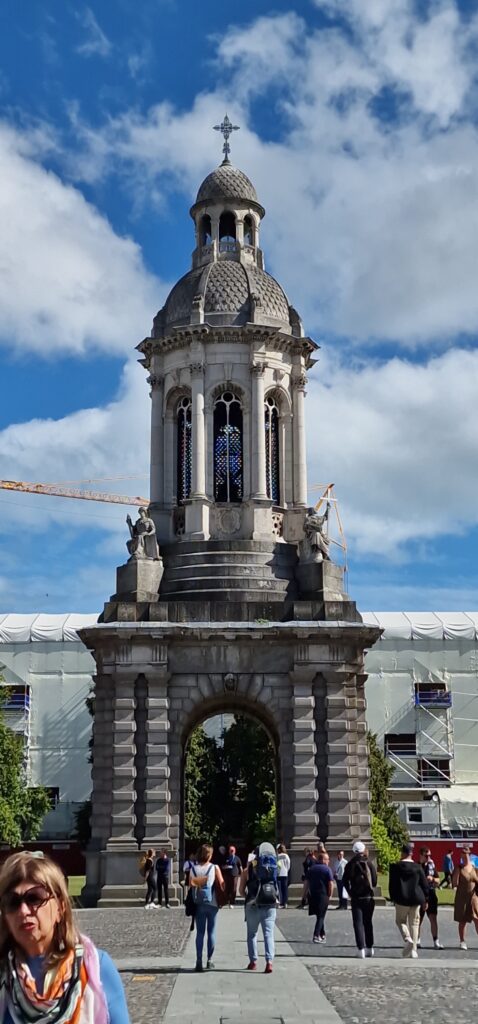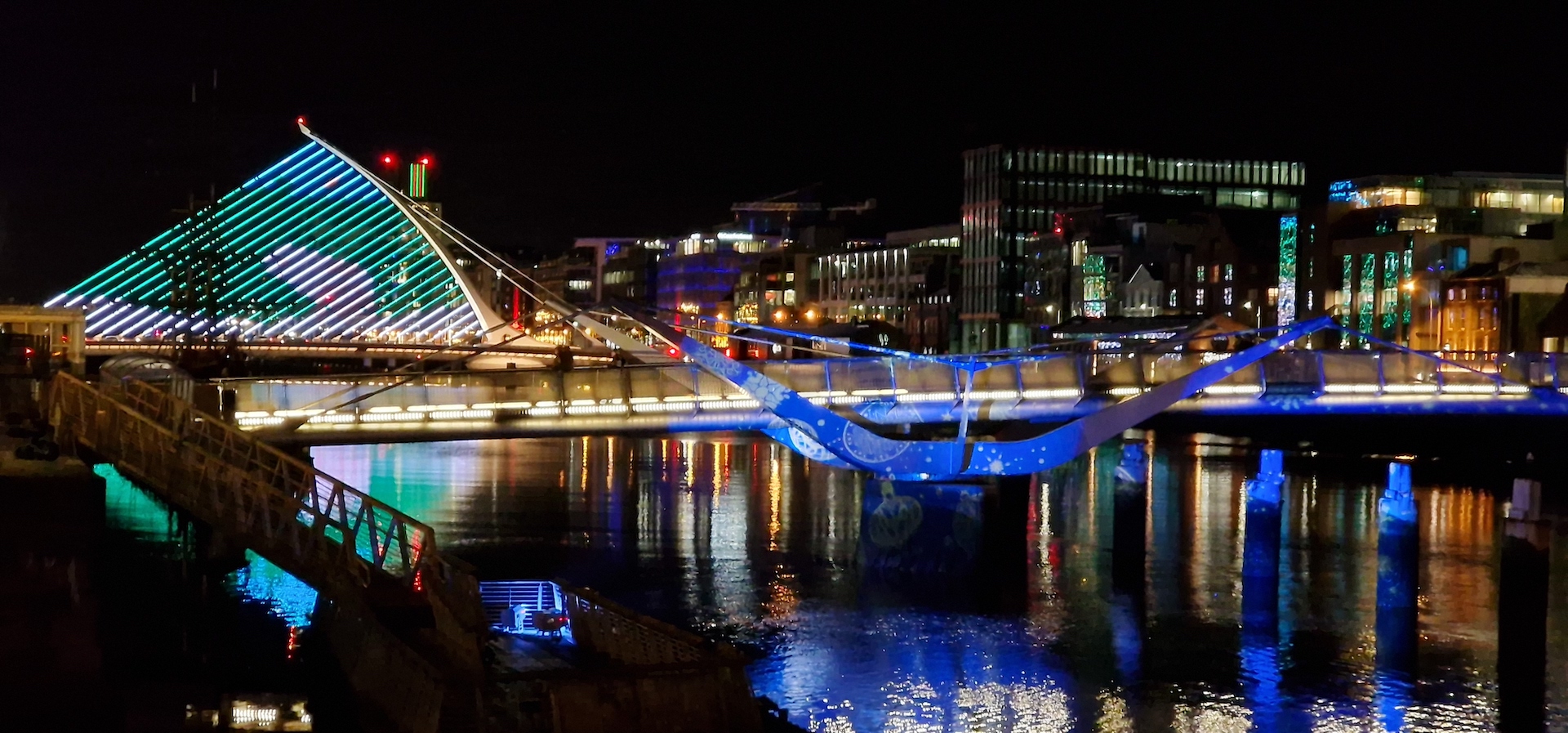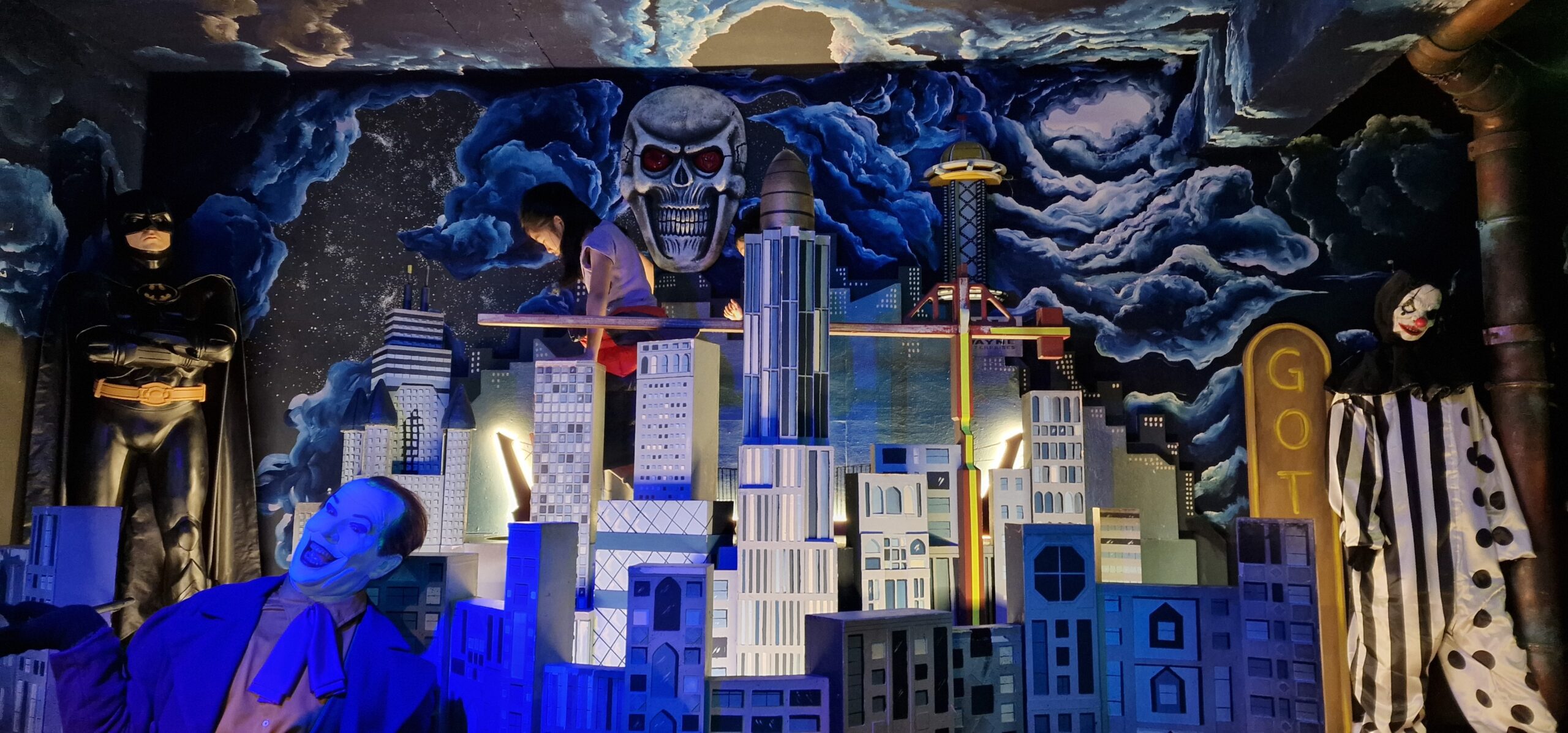
The Campanile is one of the most iconic landmarks of Trinity College Dublin, Ireland’s oldest and most prestigious university. Located in the heart of the campus, the Campanile is a tall, slender tower that stands 30 meters tall and dominates the skyline of the city center.
The Campanile was built in 1853 as part of a major expansion of Trinity College. Designed by Sir Charles Lanyon, a prominent architect of the time, the tower was intended to serve as a clock tower and bell tower, as well as a symbol of the university’s prestige and history.
The Campanile is built of granite and sandstone, and features four clock faces that are illuminated at night. The tower is topped by a copper dome and a weathervane in the shape of a ship, a nod to Trinity College’s maritime history and its location on the banks of the River Liffey.
One of the most interesting features of the Campanile is its set of 13 bells, which are housed in a small chamber near the top of the tower. The bells were cast in the 19th century by the Whitechapel Bell Foundry in London, the same foundry that cast the bells for Big Ben in London. The largest bell in the Campanile weighs over 600 kilograms and is known as the “Great Bell of Trinity”. The bells are played on special occasions, such as graduation ceremonies and other university events.
Over the years, the Campanile has become an important symbol of Trinity College and Dublin as a whole. It has been featured in countless photographs, paintings, and films, and is a popular destination for tourists and visitors to the city. Today, the Campanile remains one of the most recognizable and beloved landmarks of Trinity College Dublin, and a symbol of the university’s rich history and heritage.

